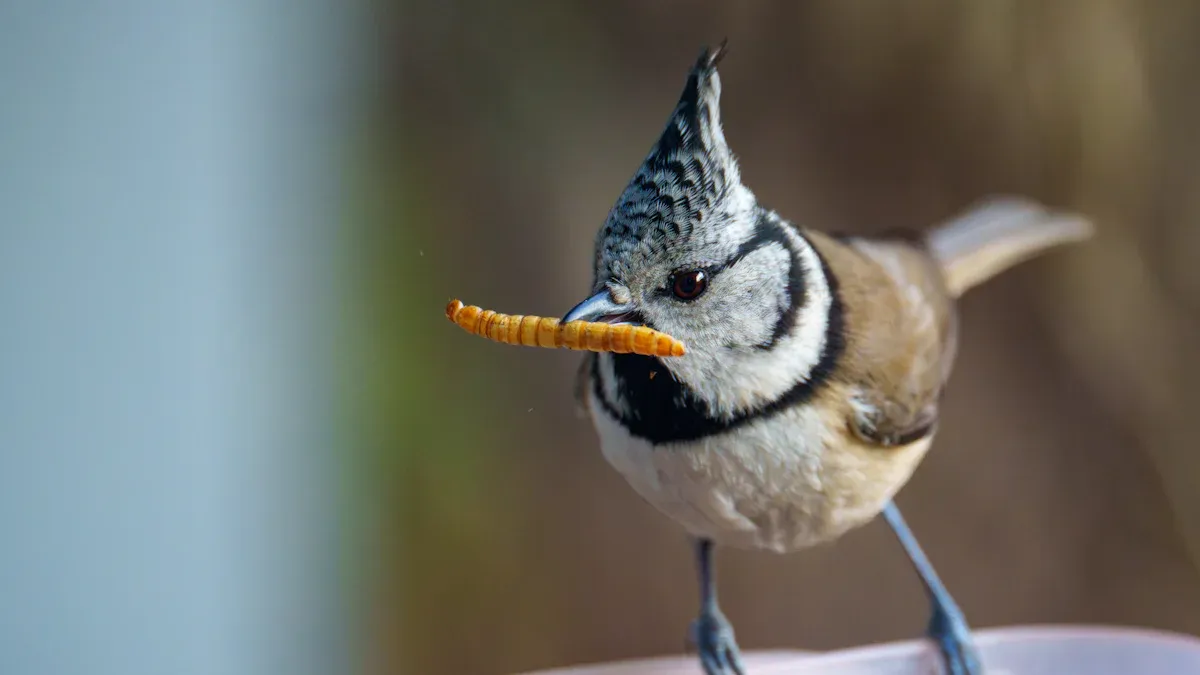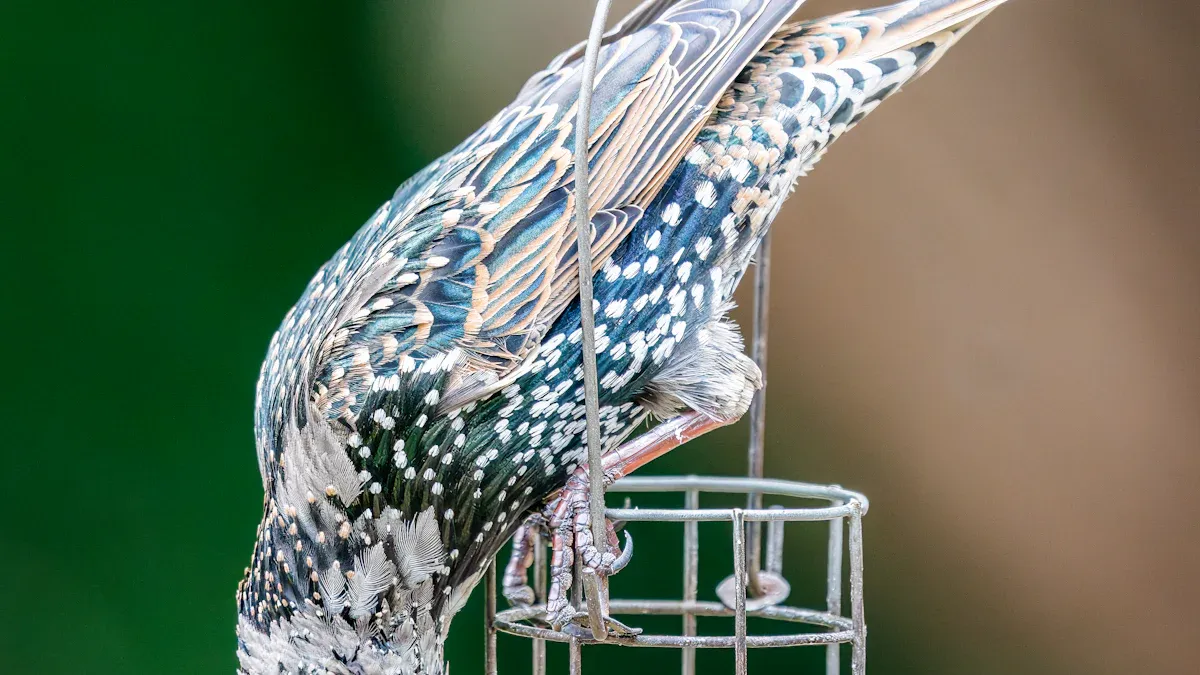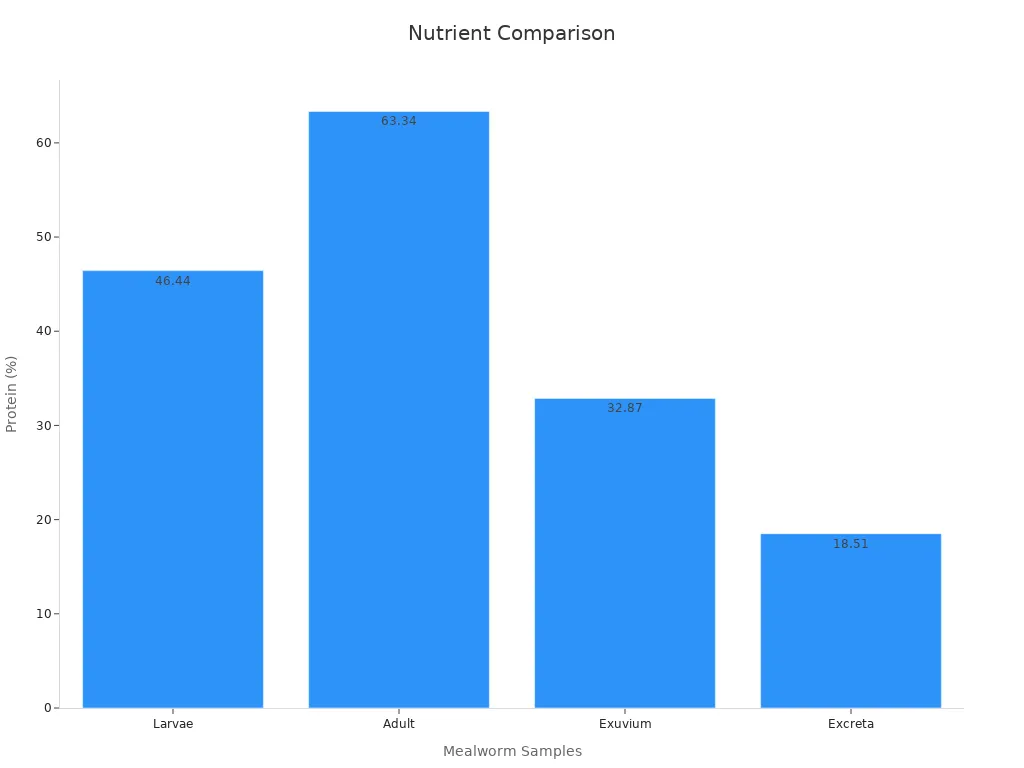
A dried mealworm feeder gives animals a protein-packed snack. Studies show dried mealworms can have up to 53% protein and 28% fat, making them a dense source of nutrition. Mealworms also help recycle organic waste, turning leftovers into valuable feed while supporting eco-friendly animal care.
Many animal keepers love how these feeders offer both nutrition and sustainability in one simple product.
Key Takeaways
- Dried mealworm feeders provide animals with high protein and healthy fats, supporting better growth and health.
- Mealworm farming uses less land and water and produces fewer greenhouse gases, making it an eco-friendly feeding option.
- Using dried mealworm feeders is easy and versatile, suitable for many animals and helps reduce feeding costs.
Why a Dried Mealworm Feeder Is a Smart Choice

Superior Nutritional Value
A dried mealworm feeder packs a powerful punch when it comes to nutrition. Mealworms offer a rich source of protein, healthy fats, and essential minerals. Many studies show that mealworms can contain between 46% and 76% protein by dry weight. This level matches or even beats traditional protein sources like soybean meal or meat. The fat content ranges from 6% to 22%, and these fats include healthy types such as oleic and linoleic acids.
Here’s a quick look at how mealworms stack up against other feeds:
| Nutrient Parameter | Mealworm Content Range / Values | Comparison / Notes |
|---|---|---|
| Protein | 46.44% – 76% of dry weight | Higher or comparable to soybean meal and traditional meat sources |
| Fat | 6% – 22% of dry weight | Includes healthy fatty acids like oleic acid (24-34%), linoleic acid (30-38%), palmitic acid (14-17%) |
| Amino Acids | Leucine, lysine, methionine + cysteine, threonine, valine | Present in significant amounts |
| Minerals | Mg (87.5 mg/100g), Zn (4.2 mg/100g), Fe (3.8 mg/100g), Cu (0.78 mg/100g), Mn (0.44 mg/100g) | Higher mineral content than traditional meat sources |
| Fatty Acid Profile | Linoleic acid (C18:2, 30-38%), Oleic acid (C18:1, 24-34%), Palmitic acid (C16:0, 14-17%) | Favorable n-6/n-3 ratio (6.76) and healthy unsaturated fatty acids |

Studies confirm that dried mealworm feeders provide high-quality proteins. Animals fed with mealworms show better growth, improved nutrient absorption, and healthier blood profiles. Experts also note that the nutritional value of mealworms can be adjusted by changing their diet, making them a flexible choice for animal nutrition.
Sustainability and Environmental Benefits
Choosing a dried mealworm feeder helps the planet. Mealworm farming uses about 90% less land than soy production. It also produces 80-99% fewer greenhouse gases compared to traditional protein sources. Mealworms thrive on agricultural byproducts and can turn organic waste into valuable protein. This means less waste and a smaller carbon footprint.
A Life Cycle Assessment by Oonincx and de Boer (2012) found that mealworm production has much lower environmental impacts than other protein sources. Mealworms need less water, less space, and create less pollution. They offer a smart way to feed animals while caring for the environment.
Broad Suitability for Different Animals
A dried mealworm feeder works for many types of animals. Poultry, pigs, reptiles, fish, and even some pets can enjoy the benefits. Farmers and pet owners find that animals love the taste and texture. The high protein and fat content support healthy growth and energy.
- Chickens and ducks lay more eggs and grow faster with mealworm-based diets.
- Fish and reptiles show better color and activity levels.
- Small mammals and birds get a tasty treat packed with nutrients.
Mealworms also offer cost savings. Studies show that using insect-based meals, like black soldier fly larvae, can lower feed costs and improve profit margins. This makes dried mealworm feeders a smart choice for both large farms and small animal keepers.
Many animal lovers appreciate how a dried mealworm feeder brings together nutrition, sustainability, and value in one simple product.
How to Use a Dried Mealworm Feeder Effectively
Feeding Methods and Best Practices
Using a dried mealworm feeder is easy and fun. Many people find that birds love mealworms, so they often mix them with regular bird seed or offer them alone in a dish or hopper feeder. Here are some simple steps to get started:
- Mix dried mealworms with bird seed for a balanced meal.
- Place mealworms in a separate dish or use a special feeder.
- Watch as birds like chickadees, cardinals, nuthatches, woodpeckers, and bluebirds visit more often.
- Offer mealworms regularly to attract a wider variety of birds.
- Enjoy the fact that dried mealworms do not spoil quickly, making them easy to use.
Tip: Birds naturally look for insects, so mealworms are a treat they recognize and enjoy.
Recommended Quantities and Animal Types
Different animals need different amounts of mealworms. Chickens and ducks can have a handful each day as a protein boost. Songbirds may only need a small scoop mixed with their usual seed. Fish, reptiles, and small mammals also benefit from mealworms, but always check the recommended serving size for each species. Start with a small amount and watch how your animals respond. Adjust as needed to keep them healthy and happy.
Storage and Product Handling Tips
To keep your dried mealworm feeder fresh, store mealworms in airtight containers. Place them in a cool, dry spot away from sunlight and humidity. Check the mealworms often for any signs of spoilage, like a bad smell, discoloration, or mold. If you notice any of these, throw them away right away. Proper storage helps keep the mealworms safe and nutritious for your animals.
Dried Mealworm Feeder vs. Traditional Feed Options
Comparison with Soy and Fishmeal
Many animal keepers want to know how a dried mealworm feeder stacks up against soy and fishmeal. Studies show that dried mealworm meal can match or even beat these traditional feeds in several ways. For example, research with broiler chicks found that adding about 4% dried mealworm meal to their diet helped them grow faster without hurting meat quality. The protein in mealworms is high, usually around 46% to 52%, and the amino acid profile is similar to fishmeal and better than soy.
Mealworms also have less crude ash than soy and fishmeal, which helps when making balanced feed. Their fiber comes from chitin, which can help animals’ digestion and boost their immune system. In pigs, dried mealworm protein digests as well as fishmeal and even better than soy for some amino acids. For fish like salmon, mealworm meal can replace part of the fishmeal or soy in their diet without hurting growth or health, as long as the amount stays reasonable.
Animal nutrition experts agree that dried mealworm feeders offer a strong alternative to soy and fishmeal, especially for those looking for a more sustainable option.
Unique Advantages Over Other Protein Sources
Dried mealworm feeders bring some special benefits to the table. Mealworms use resources very efficiently. They need less water, land, and feed than traditional livestock. This means they have a much smaller impact on the environment. Mealworms also grow quickly and turn feed into protein better than many other animals.
- Mealworms produce fewer greenhouse gases than cows, pigs, or chickens.
- Drying methods like microwave or freeze drying keep most of the important nutrients in mealworms.
- Advanced processing can make mealworm protein even better for animals.
Experts say that dried mealworm feeders stand out because they combine high nutrition, easy digestion, and eco-friendly production. These features make them a smart choice for anyone who wants to feed animals in a healthier and more responsible way.
Dried mealworm feeders give animals a smart, eco-friendly meal. Studies show mealworms need less land and water than livestock. They help reduce food waste and even support renewable energy. Pet owners and farmers see better nutrition and easier feeding. Try this simple switch for healthier animals and a greener planet.
The European Food Safety Authority confirms mealworms are safe and sustainable for animal and human diets.
Autor do artigo: Felix
FAQ
How often should animals eat dried mealworms?
Most animals enjoy dried mealworms as a treat once or twice a day. Owners can adjust the amount based on animal size and activity.
Are dried mealworm feeders safe for all pets?
Dried mealworm feeders work well for birds, reptiles, fish, and small mammals. Owners should check with a vet before feeding them to new species.
Qual é a melhor maneira de armazenar larvas secas?
Store dried mealworms in an airtight container. Keep them in a cool, dry place. This helps maintain freshness and keeps pests away.


